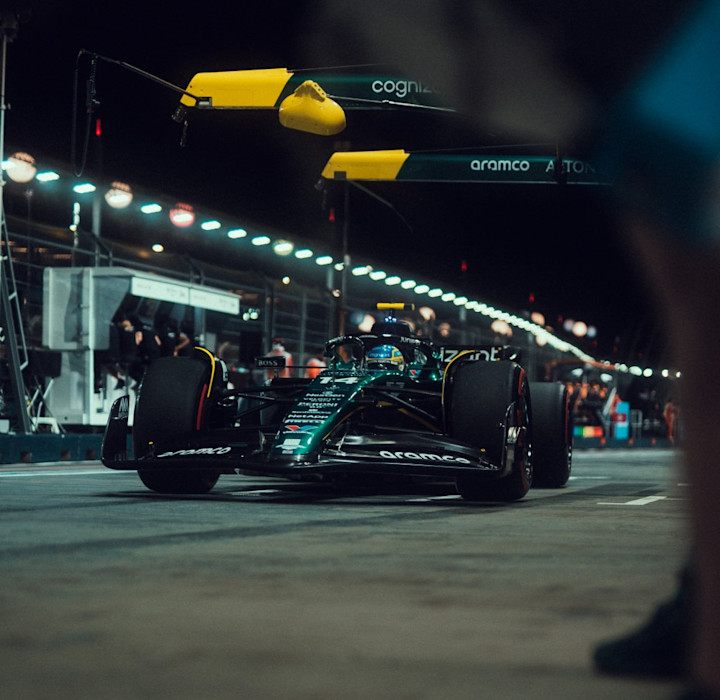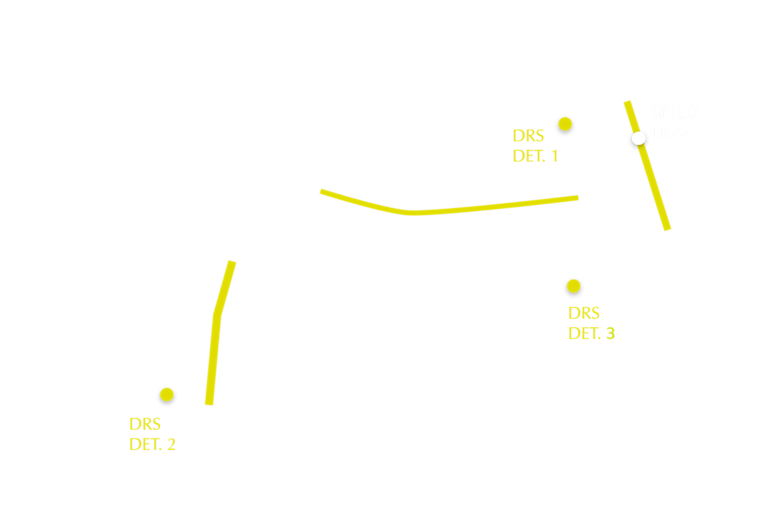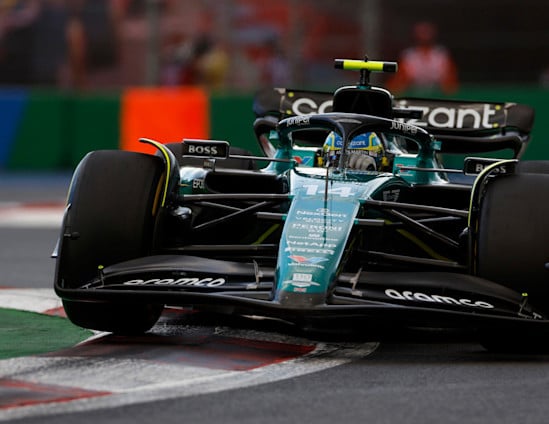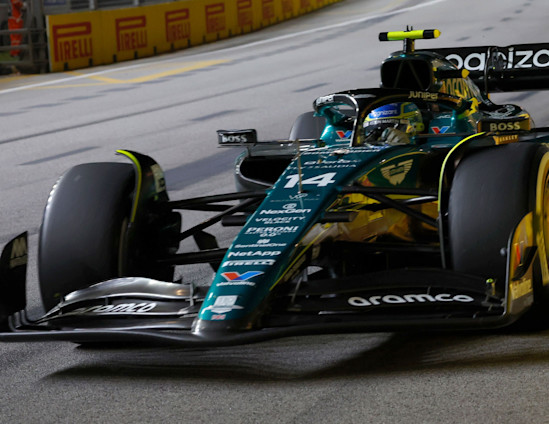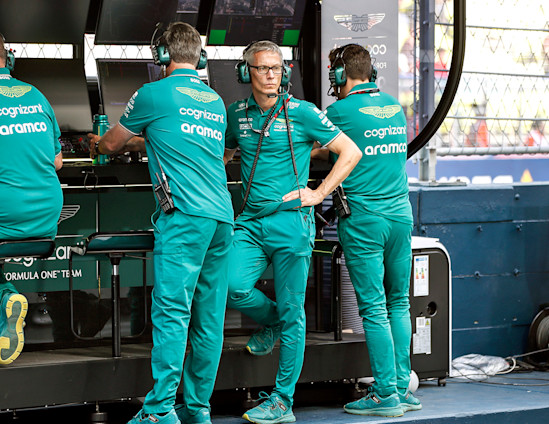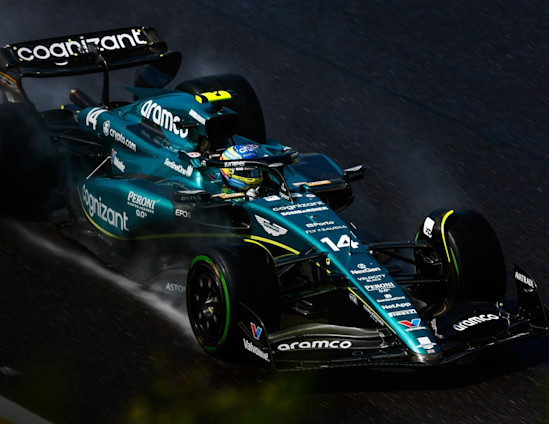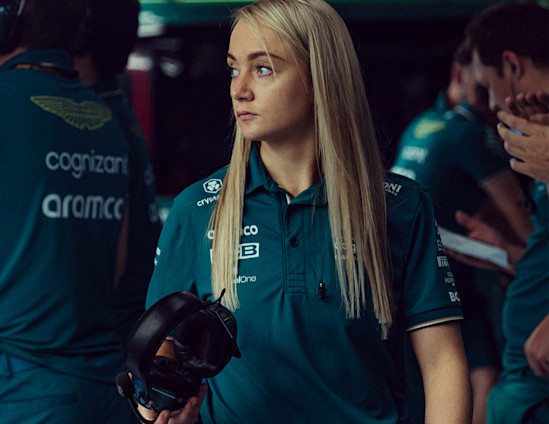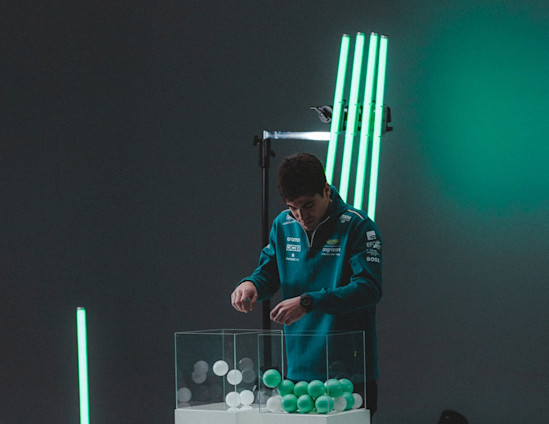


A testing Sunday sees our run of 16 consecutive scoring weekends, stretching back to the 2022 Brazilian Grand Prix, halted in Singapore.
The Debrief by Aramco
Singapore proves challenging as Fernando finishes 15th and Lance does not start the race after a Qualifying crash.

Need to know: Singapore

- Sectors
- Turns
- DRS
Talking points
Performance Director Tom McCullough explores the unique challenges that Lance, Fernando, and the team will face under the lights of Marina Bay as we prepare for the first of eight flyaway races that conclude the 2023 season.
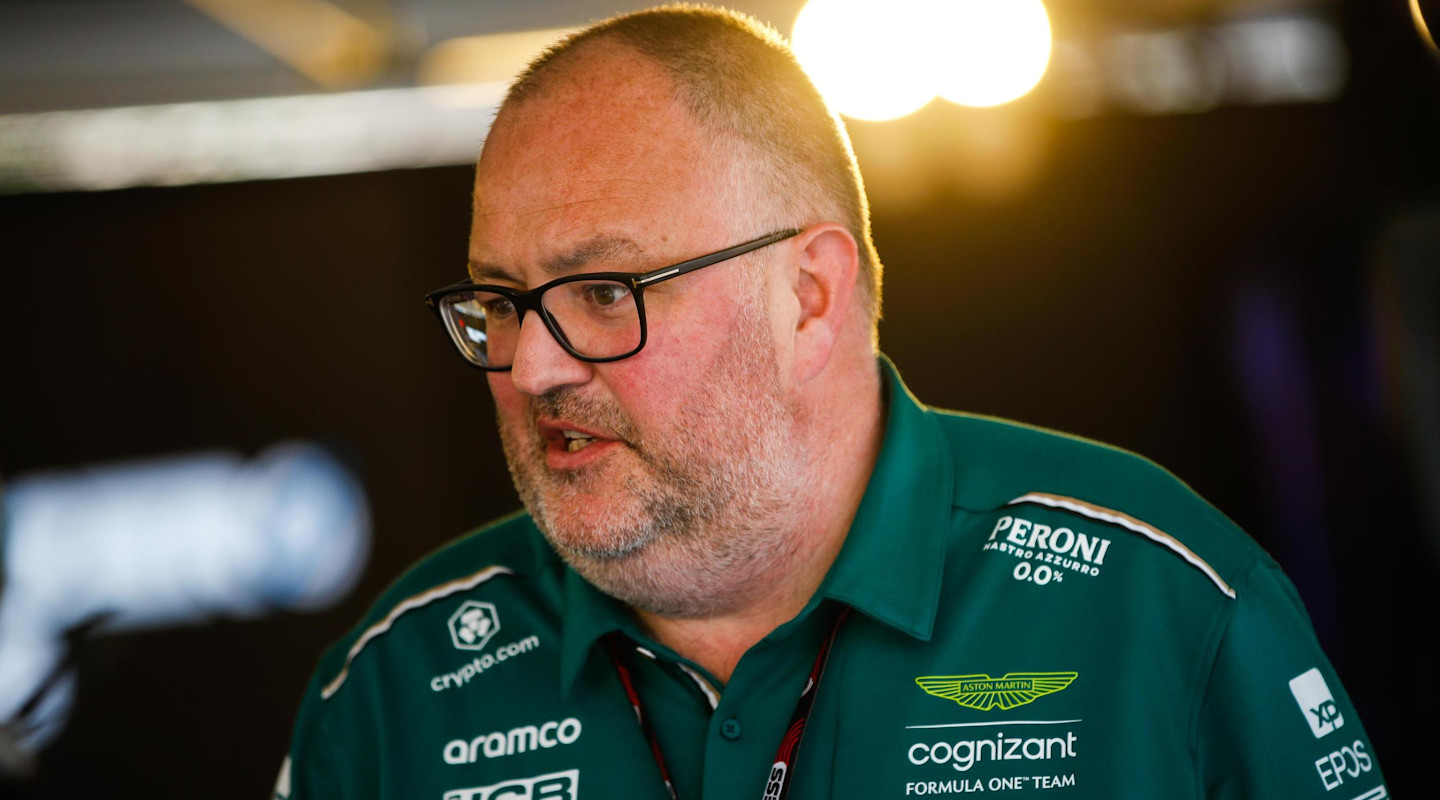
We arrive in Singapore after our 16th consecutive points-scoring weekend. How do you reflect on that achievement?
"Scoring points 16 times in a row a difficult thing to do – it's easy to underestimate just how hard this is. The bottom line is that we're fighting against well-established teams, we're still in our growth period – both in terms of our Technology Campus and in terms of hiring personnel – so there's a lot happening here.
"To finish first, first you have to finish, and reliability has been a strength of the team so far. Our scoring streak speaks to the execution of the team, Lance and Fernando; when the margins are so small in the hunt for points, it takes a significant effort to turn the tables."
As we draw closer to the end of the season, are we still bringing upgrades to the AMR23?
"We've been on the same development path for 18 months. Those philosophies haven't really changed; we're still bringing parts to the track between now and the end of the year. A lot of parts have been released a while back and by the time we get to the track, more come along.
"Even though the European leg of the season has finished, we're still bringing parts to the car. It's not as easy to bring those parts to the track for flyaway races and we have to account for delivery time, but we will have late freight that arrives to the track all the way until Friday morning – sometimes spares of updated parts arrive even later than that. It can be a real logistical challenge and some countries are harder to deliver to than others – but it's all well planned for."
What's the target as we prepare for the final eight rounds of the season?
"The target is to try to get back to second in the Constructors' Championship. That's a brave target, against some fierce competition. Mercedes have had a couple of strong events. Ferrari had their strongest event of the year at Monza, their home race; we're hoping to be more competitive as we return to some of the higher-downforce tracks going forward.
"Margins are fine at this stage of the season and now it comes down to who can bring a few more developments to the track and who can execute the best weekends – operationally, and from the drivers' side as well."
In Singapore, you never know when somebody's going to touch the wall and bring out a yellow flag, red flag or Safety Car.
What impact will the changes to the Marina Bay Circuit have and what are the challenges of racing here?
"When you go to circuits like Singapore and even Japan, they're such unique challenges and that brings a level of excitement – both from an engineering side and from a fan side. In Singapore, you never know when somebody's going to touch the wall and bring out a yellow flag, red flag or Safety Car – therefore there's a heightened level of anxiety to prepare for that.
"You have to plan ahead, and we simulate what happens in the case of a Safety Car on every lap of the race. The Singapore Grand Prix is one race where the Safety Car is a common occurrence so we always have to be prepared for that; it's always easy to choose to box during a Safety Car and fit new tyres but if you lose too many positions and can't make them back up, then it's a disaster.
"On top of that, the circuit layout has changed. Four low-speed corners have been removed from Sector Three, which will probably make things a bit easier for the tyres. There are fewer braking and traction zones. In effect, they've taken away four of those corners, so the tyres will be in a better shape for the last few corners."
As we head to Asia, how hard is it to get used to the change in location and time zone?
"With it being a night race, we eat and sleep on European time in Singapore. The curfew times are based around the session times, and the session times are late in the day while FP2, Qualifying and the race start take place at 20:00 or later local time. We offset everything to deal with this.
"The biggest challenge is going back to the hotel when daylight breaks. You don't want to be taking in too much natural daylight before you go to sleep as three sessions take place under darkness. Sometimes, after Qualifying, it's easy to think about lots of extra ‘what if?' scenarios, get back too late and walk back in the daylight. That plays havoc with your sleep pattern.
"We travel to Japan early next week so there's time to get used to the jetlag. There's so much work to do between races – analysing, debriefing the Singapore race, preparing for the Japanese Grand Prix – that you're so busy and kept awake by adrenaline. It keeps you going. I tend to find it's fine in the moment; once you finish the Japanese Grand Prix and try and get back to your home time zone, that's when you feel it. You've been on the go for many days in a row, physically and mentally – it's quite hard to recover from that quickly."
Insight and Speed
Unlocking the Lap
The lap begins with a short run to the opening three turns. Turn One is a medium-speed left-hander that exits onto a shallow right-hand bend and immediately leads to a sharp left-hander. A long straight follows to Turn Five, where it's important to use all of the entry kerb to maximise your exit and carry as much speed as you can down Raffles Boulevard, the first of three DRS zones.
Turn Seven is a hard braking zone followed by 90-degree corners in Turns Eight and Nine. Turn 10 is the Singapore Sling, a medium-speed left-hander that leads into a pair of fast corners that exit onto Fullerton Road, a short straight that bends to the right – making the entry into the Turn 13 hairpin tricky.
The second DRS zone follows Turn 13, leading onto the sharp Turn 14 right-hander. The following straight – with a left-hand kink – could prove conducive to overtaking, with the Turns 16-17 chicane ending that high-speed run. The lap finishes with two high-speed left-hand corners, Turns 18 and 19, and the start-finish straight with another DRS zone.
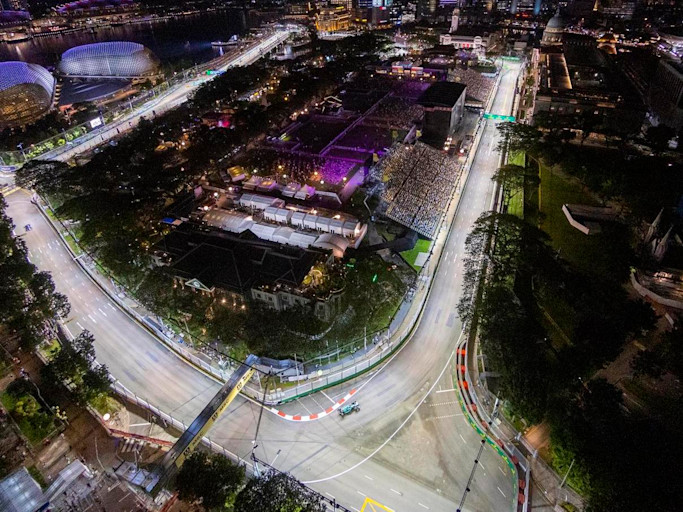
Powered by How
How does Singapore test drivers’ stamina? Team Ambassador and veteran F1 driver Pedro de la Rosa reflects on his experience racing at the Marina Bay Circuit.
"Singapore has become the most demanding Grand Prix by far from a physical point of view – it's comparable to the Malaysian Grand Prix. I was happy to see the Safety Car during the race; it was an opportunity to hydrate and take a breath. The heat and humidity are unrelenting, this is a long race that can hit the two-hour limit, and there's a lot of stress. Marina Bay Street Circuit is a track that requires precision and concentration, and you can pay a big price for a small mistake.
"One of the best ways to train for it is to run a lap of the circuit late at night – rather than training in an air-conditioned gym – to experience the climatic conditions. That's why some drivers take an exercise bike into a sauna when they're in Europe as part of their preparations for this Grand Prix. I feel like I could see better here than I could at some day races – the lighting is brilliant and there are no shadows, so I could see every detail of the track. I even experimented with using a tinted visor during practice sessions.
"The easiest thing about the Singapore Grand Prix is the schedule. You eat breakfast, lunch and dinner at the same time you would in Europe, so there's no jetlag. It's important to ensure that in the hotel, there's no daylight coming in when you're trying to sleep during the day – and tell the hotel not to disturb you. That can upset your rest and your race."
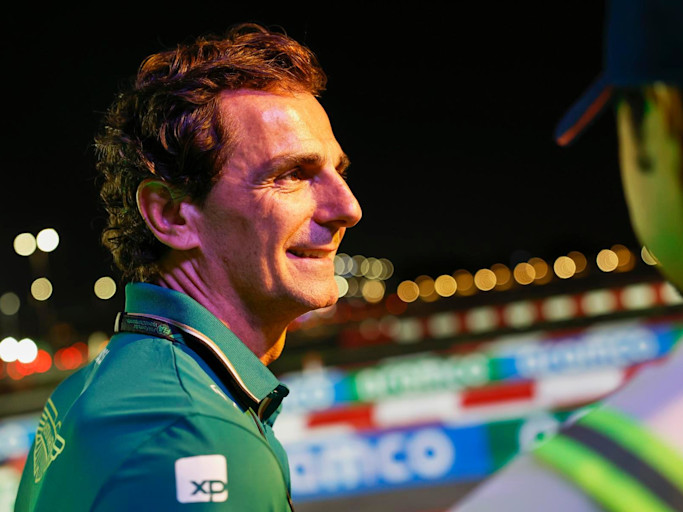
Cloud Report
We look at the weather for this weekend's Singapore Grand Prix together with Global Partner NetApp, a global hybrid cloud storage partner with solutions that perform across a diverse environment, allowing us to gain insights on weather-related data as well as telemetry data.
Temperatures are expected to range between 26 and 32 degrees Celsius with intermittent showers in the build-up to the weekend. As usual, humidity is set to be high throughout the weekend.
There is around a 20 per cent chance of showers during Free Practice One and Two, with moderate winds. Saturday has a similar forecast, with temperatures remaining high even as the sun goes down for Qualifying.
There is an increased chance of rain for Sunday's Grand Prix, with temperatures hovering around 29 degrees Celsius for the race and winds in a southerly direction.

XPerience Points
In Formula One, you're constantly learning. Every lap, every mile, every second, is an opportunity to further your understanding and, ultimately, discover ways to unlock performance. In partnership with XP Inc., here are some of the key points for the Singapore Grand Prix.
Get ready for 2024
Stand by for the launch of the new Aston Martin F1 Team Store and 2024 teamwear.
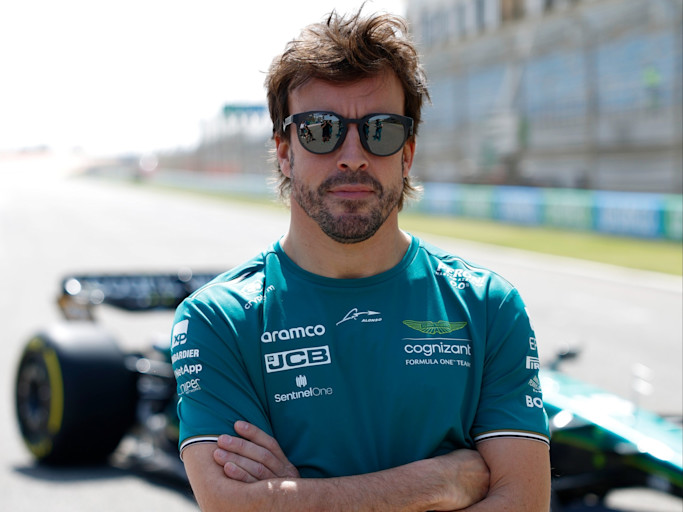
Amplify your fan experience
From exclusive collabs to once-in-a-lifetime prizes, I / AM DROPS is a new series of unique and ultra-limited moments and fan experiences.
Sign up for I / AM or sign in to unlock.


